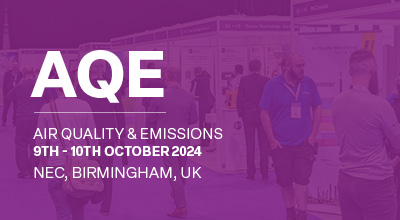| Abstract Title: | Airborne dust differentiation and source apportionment by automated SEM/EDX single particle analysis coupled to a machine learning classifier |
| Presenter Name: | Dr Juanita Rausch |
| Co-authors/Co-presenters: | Dr David Jaramillo-Vogel Dr Sébastien Perseguers |
| Company/Organisation: | Particle Vision |
| Country: | Switzerland |
Abstract Information :
The link between particle pollution and health issues has been widely demonstrated by different proxies and researchers. This is the reason why the WHO (World Health Organization) set ambitious targets by drastically lowering the recommended limit values for particulate matter PM10 and PM2.5 in the newest WHO Global air quality guidelines published in September 2021. In view of these new recommendations, it is evident that many measuring points (and therefore, inhabited areas) are affected by PM10 and PM2.5 exceedances. Therefore, authorities have more than ever the responsibility of seeking lowering PM values. rnThe only chance to achieve lower PM10 and PM2.5 concentrations is to first obtain a better understanding on the fine dust constituents. This is crucial to implement targeted dust mitigation measures. Unfortunately, there is no one single method that can characterize the totality of PM10 and PM2.5. Owing to their intrinsic different characteristics, and hence, stability and detectability with the various available methods (e.g. bulk analysis such as ICP-MS/AES to determine elemental composition, IC for water soluble secondary particles, TOT for elemental and organic carbon, and single particle analysis such as SEM/EDX, Raman, µFTIR for primary particles, among many others) a combination of multiple methods needs to be applied in order to achieve a nearly complete PM10, resp. PM2.5 characterization and differentiation. rnOwing the increasing share of traffic-derived non-exhaust particles in airborne dust a need for a fast, reliable, and cost-effective method to differentiate, quantify and monitor particles like tyre wear, brake wear, road wear, road marking, bitumen, etc. becomes evident. Here, we present a powerful approach that was developed over the past years to identify and quantify primary particle pollution not only as a total concentration but with a source-differentiation approach applicable for various environmental questions and industries (including not only traffic but also mining, quarrying, recycling, port transshipment, etc. environments).rnThe method is based on single-particle analysis by Scanning Electron Microscopy (SEM) and Energy Dispersive X-ray Spectroscopy (EDX) coupled to a machine learning algorithm with the aim of classifying and quantifying the concentration of the different particle types (for methodological details see, Rausch et al., 2022). It considers not only the elemental composition of the particles but also their size, morphology, and degree of heterogeneity (mixing) as they occur in real-world environmental samples.rnOwing the detailed particle characterization, and the source-differentiated results, the influence of specific human-induced activities (e.g. traffic, quarrying/mining, industry) on air quality can be monitored, allowing targeted measures to be taken by stakeholders and decision makers. In addition, a verification and quantification of the effectiveness of the implemented dust mitigation measures (e.g. transition towards vehicle electrification), can be performed.rn



